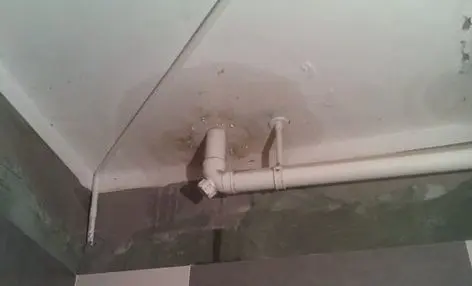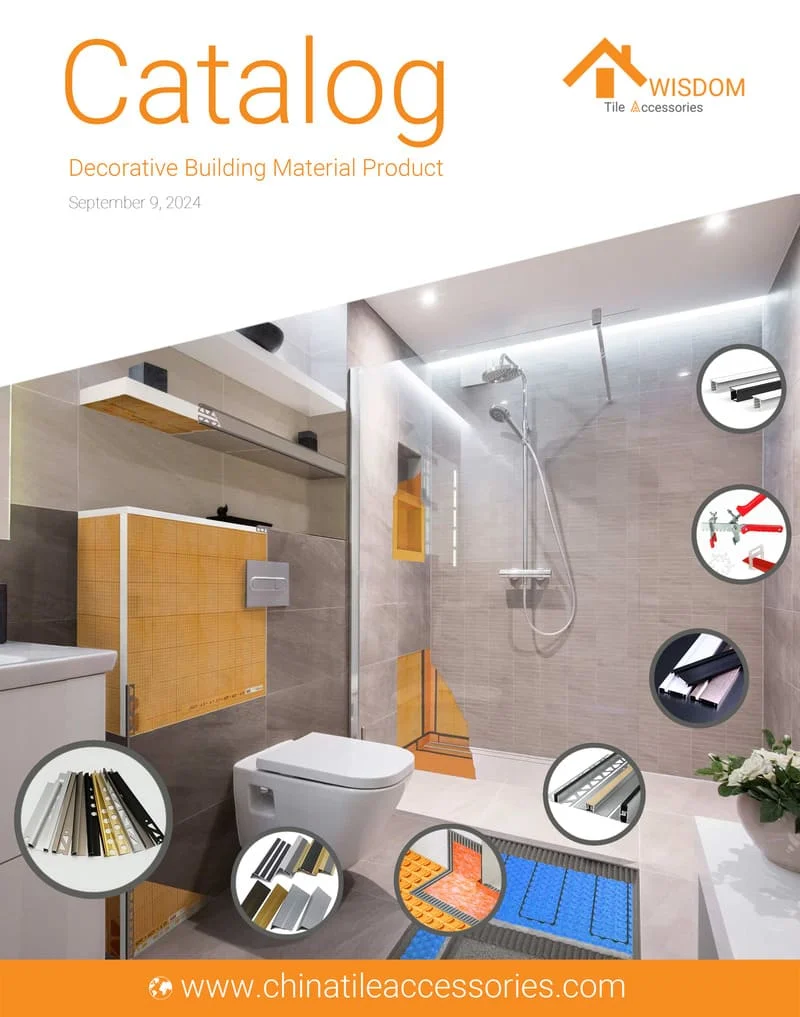Hi, are you feeling troubled by a leaking bathroom? I suspect you haven't quite pinpointed the real issue yet.
It involves knowledge of bathroom waterproofing, an aspect 99% of people tend to overlook. This oversight is why many are continually plagued by bathroom floor leaks.
Now, let's unveil this mystery and learn the comprehensive bathroom waterproofing solutions.
By analyzing specific real-life cases, I'll tell you why bathrooms leak and how to ensure proper bathroom waterproofing.
![[Bathroom Waterproofing Solution] 10 Reason Your Floor is Leaking 1 [Bathroom Waterproofing Solution] 10 Reason Your Floor is Leaking](https://chinatileaccessories.com/wp-content/uploads/2023/11/bathroom-waterproofing-00.png)
What to do if you have a leak in your house?
It depends on whether you know where the leaks are.
If you got it, you can fix the leaks from common leakage. For example, common hidden leakage points are sewer pipe openings, bathroom doorways, bathroom corners.
If you can’t find it, the problem will be complicated.
When you know where the leaks are
Method 1: Grouting treatment. Polyurethane chemical grout is injected into the concrete using a high-pressure grouting machine, which expands and thus plugs the minor cracks. As long as the leaks are obvious, foamed polyurethane is the most direct and effective way to plug leaks without having to make a big deal out of it.
Method 2: Remove all the tiles in bathroom. Focus on the leaky spots and then perform a flood test to confirm that there is no leakage and then restore the tiles.
When you don’t know where the leaks are
When you repeatedly repair and still occur water seepage. It is recommended to remove all hardware and sanitary ware in the bathroom. Then remove the bathroom floor and the first layer of tiles at the very bottom. Of course, you should also smoothen the wall and floor. After reaching the conditions that meet the waterproof construction, then waterproof painting. Finally, please do 48 hours of flood test, and go back to restoring the tiles after the standards are met.
Why is there still a leak after the Flood Test
The flood test is not the only test for leaks. Waterproofing is a complex task in home improvement. When there is a mistake in any one place, it is likely to lead to water leakage in your kitchen, toilet, bathroom and other places. Now, let's analyze some specific cases to help you identify your problem areas faster.
Situation 1
The house has been renovated for about 2 years and there have been no leaks during that time. However, the bathroom suddenly developed a water leak.
Reason 1
The greatest likelihood is that the new building has a greater degree of expansion settlement, which exceeds the pull depth of the waterproofing.
Reason 2
It is also possible that the waterproof coating procured is a forgery. It is not very resistant to water and corrosion. When time passes, water leakage and seepage will occur.
Reason 3
Another reason is not moving the downspouts properly. In the case of you have to move the downspouts, the process of renovation as much as possible to ensure that the downpipe is completely covered with cement mortar and fixed to ensure that the waterproofing coating is applied as a membrane in one piece. Remember not to paint on the pipe.
Situation 2
When the renovation was completed. A few days after you moved in, there was a water leak downstairs.

Reason 1
It may be a problem created by the tiler in the construction process. Because of the large curvature of the ground leveling or wall corners in the early stage, the tiler is unable to drop the bricks when tiling. They shoveled out the raised areas to facilitate construction, which led to the leak.
Reason 2
Plumbing pipes pass through the floor. Then the tiler stepped on the plumbing lines too hard during construction, tearing the waterproofing at the corners and causing leaks.
Situation 3
The door was soaked and the bathroom door panel turned black.

Reason 1
Without a waterproof water stop, currently, most developers, when constructing bathroom floors, reserve a space for a water stop. The bathroom floor is 3-5 cm lower than the room floor, effectively blocking water in the tile mortar layer from flowing outward. A small number of developers do not use this technique, so the bathroom floor and the living room floor are at the same height. In such cases, it is necessary to add a water stop during the renovation process to prevent water from spilling out of the bathroom and soaking the door and floor.
Reason 2
The bathroom door area has not been waterproofed properly, with no upward or outward extension.
Tips:
- Upward Extension: This means the waterproofing material goes up the wall from the floor around the door, like a protective skirt. It stops water from getting into the wall at the floor's edge.
- Outward Extension: Here, the waterproofing stretches a bit outside the bathroom door. It's like a barrier that keeps water from escaping the bathroom and damaging nearby areas.
Situation 4
After a few days of moving in, the bathroom wall is experiencing moisture return, or the wall across from the door is moldy.
Reason 1
The waterproofing paint was applied unevenly and there were sand holes in the walls.
Reason 2
The waterproofing of the bathroom doorway was not handled properly or there was no water retaining edge. Moisture vapor went down the floor void to the opposite wall, causing mold on the wall.
Situation 5
The bathroom door is a set door, and expansion has occurred at the bottom of the door casing.
Reason
Not using the correct process to treat the door casing during construction (allowing the edge casing to sit on the threshold stone) caused moisture to enter the door casing, which caused the bottom of the door casing to expand.
3 Areas of Your Home to Waterproof
Bathroom
The bathroom is a key area in the waterproofing of the home. You have to make sure that you do bathroom waterproofing properly.
Balcony
In general, open or closed balconies need to be waterproofed to avoid leakage due to imperfect waterproofing of the civil facade.
In practice , painting height within 300mm is sufficient. If the balcony has placed a washing machine, you need to focus on whether the floor drain of the washing machine is draining smoothly and whether there is any leakage.
Kitchen
If you are living in a second-hand house, it is recommended to do waterproofing work in the kitchen. For new houses, waterproofing can be dispensed with as the kitchen splash is small. In addition, make sure to choose a good corner valve when renovating the kitchen to prevent water seepage and leakage.
How to Choose Right Waterproof Materials
Mainstream waterproofing materials on the market can be divided into 3 categories: polyurethane waterproofing materials (single-component, two-component), polymer cement-based waterproofing materials, and waterproofing membrane (polypropylene).
Among them, polymer cement-based is the most widely used, which has gradually become a popular choice of waterproof materials.


Type | Coating Properties | Tackiness | Environmental Friendliness | Construction |
|---|---|---|---|---|
Polyurethane waterproofing materials | The coating has a long life, high elongation and high tensile strength. It has strong corrosion and water resistance as well as high and low temperature resistance. | It bonds strongly to the substrate and does not combine well with other materials after coating formation. | One-component polyurethane waterproofing materials are non-toxic and environmentally friendly. But two-component ones are somewhat toxic. | The requirements for building substrates are more stringent, with no standing water or ash. |
Polymer cement-based waterproofing materials | The coating is tough and has high strength. However, it is weak against UV rays and is only suitable for indoor waterproofing. | Overall performance and bonding is not as good as polyurethane. However it can be combined well with other decorative materials. | Non-toxic and environmentally friendly | Short construction period, easy construction and low cost. It can also be used on wet floors. |
Waterproofing membrane | Poor plasticity. Multi-piece splicing is required for construction layer with complex shapes. | It does not combine well with other materials and tends to cause tile lippage. | Non-toxic and environmentally friendly | Short construction period, easy construction and low cost. |
5 Waterproofing Construction Standards
Construction Layer Treatment
- For Ground: Before waterproofing, it's essential to level the floor. An uneven floor can affect the effectiveness of waterproofing and may lead to cracks and leaks due to uneven application of waterproofing paint. Use highly elastic and flexible waterproof paint at joints such as floor drains, corners, and where pipes meet the wall. The joint between the bathroom wall and floor is the most likely to shift and leak.
- For Wall: There shouldn't be any pitting or looseness on the wall. If there are such issues, they must be addressed. The base surface of the wall should be smooth, clean, and sturdy. Newly installed water pipes should be securely fixed, with no exposed pipes or cracks after backfilling; treat the base of the pipes and the corners of the wall with rounded angles.

- For Shower: As shower area, it's recommended to waterproof up to a height of 1800 mm. Many people think that applying more is better, but actually, it's advisable to keep the waterproofing height within 2000 mm, which is sufficient for normal use. If the bathroom has a dry and wet area separated, the dry area's wall waterproofing should ideally be applied up to a height of 1200 mm
Apply First Waterproof Membrane Coat

First, focus on painting the areas around the water supply and drainage pipes and the corners. Then, paint from the inside out.
When you are painting, apply vertically first and then horizontally, ensuring even application and thickness according to the requirements of the waterproofing product used.
Apply Second Waterproof Membrane Coat
When applying the second coat of waterproofing, make sure that the first coat has completely dried and formed a film before proceeding. If the second coat is applied before the first is fully dry, the waterproofing effectiveness will be significantly reduced.
Waterproof Testing and Inspection
For the water retention test or flood test, the normal water height is 3-5 cm, and the duration is 24-48 hours to observe for any leakage.

Protect Waterproofing Layer
After confirming that the test passes, before proceeding with construction, it's necessary to protect the floor with waterproofing. Normally, a thin layer of cement mortar is used for protection, with a thickness not exceeding one centimeter. This technique can be selected based on the tile laying process. If the wall tiles are installed over the floor tiles, waterproof layer protection is not necessary.

Let's summarize the waterproofing construction process:
1. Treat the construction layer of the wall.
2. Apply the first coat of waterproofing on the wall, extending it 20 cm onto the floor from the corner.
3. After the first coat dries thoroughly, apply the second coat of waterproofing.
4. Install wall tiles, leaving the bottom row unfinished.
5. Clean the floor to prepare for waterproofing, and apply two coats of waterproof paint on the floor and the bottom row of wall tiles.
6. Conduct a 24-48 hours flood test.
7. After confirming the waterproofing is satisfactory, install the floor tiles. Once dry, lay the final row of wall tiles.

Tips: How to Repair a Damaged Waterproof Layer?
Waterproofing is a concealed project. When the waterproof layer is accidentally damaged during subsequent construction.
And if the floor tiles have already been installed, do NOT break the tiles. Instead, use professional waterproofing materials to fill all the gaps and ensure proper waterproofing.
This method is also applicable for repairing a failed waterproof layer in bathrooms.
3 Precautions for Waterproof Construction
- Pay attention to the uniformity of the waterproofing layer during application and avoid missing any spots. The completed waterproofing surface should have a slope leading smoothly to the drain.

2. Carefully inspect the quality of the area around the floor drain and the root of the pipes in wall holes. The wall holes must be tightly sealed and meet quality standards. When applying the leveling layer, the base of the pipes must be properly sealed.
3. For the construction of bathroom door openings, it's recommended to add a water bar at the position of the bathroom door to prevent water accumulation and leakage due to the floor's slope. It's also advisable to waterproof up to 300mm on both sides of the door opening.
Key Takeaways in Leak Prevention
I believe you have solved the question in your mind. Waterproof construction is not a simple thing, the key lies in you learn how to solve the problem: find the leakage point, analyze the cause, choose the waterproof material and then follow the correct waterproof construction standard.
I'm glad to share the above knowledge and cases for you, if you still have more decoration knowledge you want to know, please feel free to contact us.
Some questions and answers about waterproofing
Is bamboo flooring waterproof
Bamboo flooring is not waterproof, but it can provide significant water resistance. Natural bamboo prevents water from penetrating its cell walls for a limited period of time, but may suffer water damage, swelling, warping and discoloration if exposed to water for extended periods of time.
Is cork flooring waterproof
Cork flooring, similar to bamboo, is not inherently waterproof, but has inherent qualities that make it resistant to rot and mold. It can be made waterproof by attaching a polyurethane layer.
How to waterproof concrete floor
First, the concrete surface must be thoroughly cleaned and prepared. Then, a concrete sealer and waterproofing membrane is applied. Cracks and damaged areas should be filled and repaired. You can apply a second coat of concrete sealer for extra protection.


